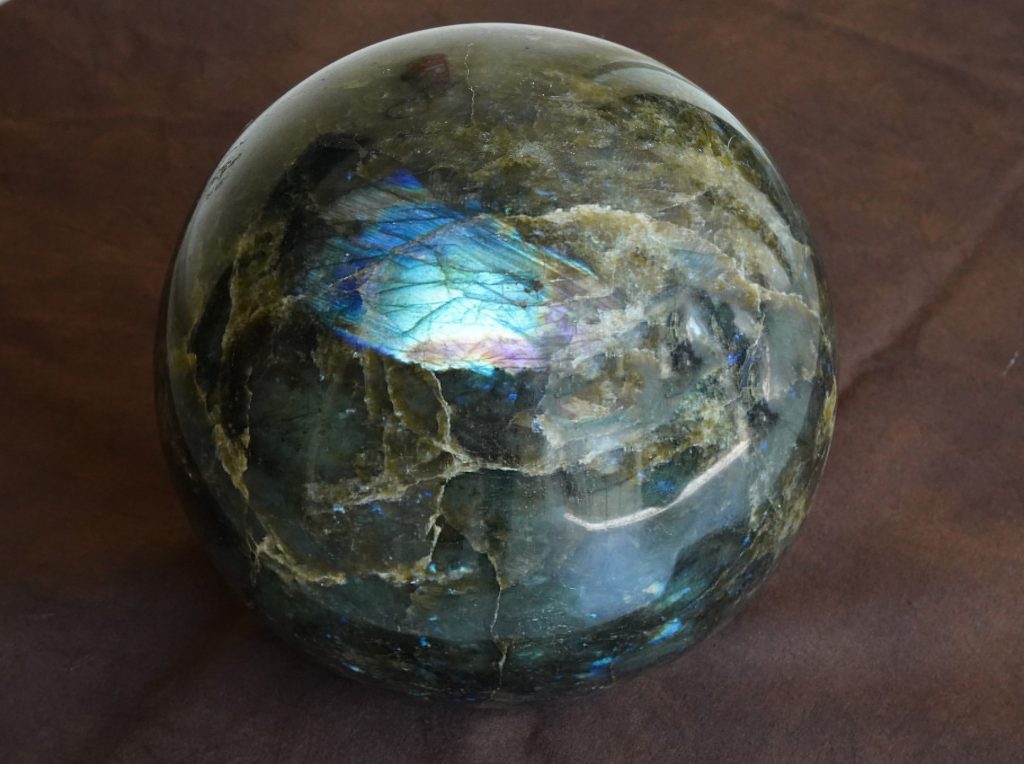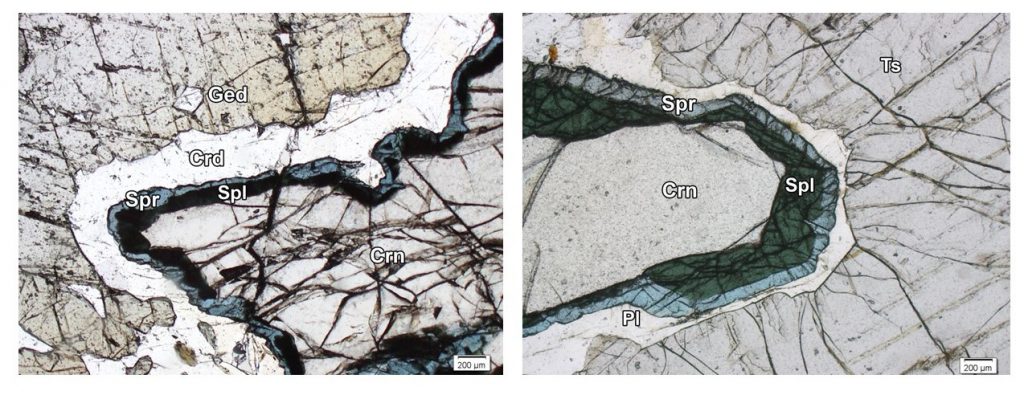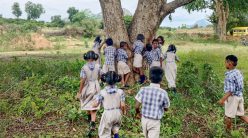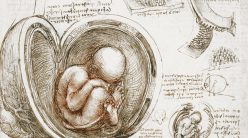How geologists connect the dots to tell stories of the Earth’s evolution

It was a clear but cold July evening in the Kumaon Himalayas in Uttarakhand. Prakash Chandra Arya and his younger brother, Vikas, were on day one of their 15-day trek from a village called Munsiyari to the Milam glacier, more than 4000 m above sea level. They had crossed the village of Babaldhar, through dense forests of oak and pine, and were hoping to
reach the next village by dusk. The sun had set, but they could not see any sign of habitation up ahead. They continued to walk in the dark until 1 am, hoping to reach the next village, but to no avail. They had to take a break, and get some rest. On the narrow path overlooking a steep valley, the couldn’t even pitch a tent. So, they opened the two umbrellas they had for shelter, and built a small fire to keep the wild animals at bay. They somehow made it through the night, and continued on their journey. By the third day, the terrain was rougher and they had to cross a collapsed bridge. Even though the brothers were born and brought up in these hills, and were trained mountaineers, Prakash felt like giving up. How could he face his parents if something happened to Vikas? His brother reassured him, saying, “Let us walk for one more day, and if we feel that it’s too tough, we will come back.”
Prakash, a PhD student with Sajeev Krishnan in the Petrology lab at the Centre for Earth Sciences (CEaS), IISc, was looking for two specific types of rocks (petrology is the study of rocks). These rocks are no ordinary pieces of stone – they contain critical clues to events that occurred 40 to 50 million years ago, when the Indian landmass collided with Asia. Sedimentary rocks found in the Himalayas contain evidence of the first life forms on Earth, which existed in oceans of the past approximately 600 million years ago, before the collision occurred. And metamorphic rocks contain information about the extreme temperature and pressure changes that the tallest mountain chain on Earth has undergone since its birth. “We study such processes [that happened] in the past to understand the present dynamics of the planet. We can then extrapolate to the future,” says Prakash. “Imagine a book in which each page is a year in the Earth’s evolution, and somehow all pages of this book are scattered all over the world. Suppose you find page number 10, which has a volcanic eruption; then page 15, that records the emergence of complex life forms on Earth, and then you find page 18, when a meteorite hit. This is what we do — we are trying to put together these pages to understand how the planet Earth, and life on it, has evolved.”

(Photo courtesy: Prakash Arya)
Rocks tell tales
The science of rocks and minerals has fascinated researchers at IISc since the time of CV Raman, who studied them in the 1940s and 50s for their refractive properties. He published many papers delving into the mechanisms that make them shine and glimmer. Raman spent a great deal of time studying the geography and geology of the Krishna Valley to learn more about diamonds and their occurrence, according to a tribute written by former IISc Director S Bhagavantam. In the late 1970s, GV Anantha Iyer and his group from the Department of Inorganic and Physical Chemistry conducted research on the geochemical properties of ancient rocks from south Karnataka. AG Menon, who later became the Chair of CEaS, was also a part of this group. Since its inception in 2007, faculty members at CEaS have been carrying on the baton. The Petrology group at CEaS works on textural and chemical signatures of rocks and minerals from various parts of the world, and in the process has built one of the largest collections of rare rock and mineral samples in the country, says Sajeev.

(Photo: KG Haridasan, sample from Sajeev Krishnan’s collection)
Prakash is insistent on clearing up a common misconception about geology – it is not just the study of rocks or minerals. “It is that too, but it is much more. We study time. Earth was formed 4.5 billion years back, and some of the processes [that started then] are still going on,” he says.
The evidence for these processes is preserved in very old rocks only in a few places around the world, says Sreehari Lakshmanan, Assistant Professor at Shimane University, Japan, and a former project assistant in the Petrology lab. Karnataka is one of these key regions. It contains the Dharwar Craton, formed between 3.6 and 2.5 billion years ago. A craton is a very stable part of Earth which has remained undisturbed for millenia. “We are born and brought up above these ancient rocks, but very few people know that. Even IISc has a few fragments of some special rocks — very old granite that is 2.5 billion years old,” he says.
“We are born and brought up above these ancient rocks, but very few people know that”
“We need multiple pieces of evidence to understand the evolution of Earth through time,” says Ishwar Kumar Cukkemane, currently Assistant Professor at IIT Kanpur and an alumnus of the Petrology research group. He uses satellite imagery to identify lineaments – deformations in the Earth’s crust and upper mantle, which can be detected as faults and folds in the terrain.
One such piece of evidence is minerals like chromite that are resistant to the effects of high temperature and pressure. This makes chromite an excellent candidate to study how rocks have formed under extreme conditions in nature. Veni Sudarsan, a final year PhD student who is currently at the Institut de Physique du Globe de Paris, has studied this mineral extensively. “I have samples from almost all over the world. I am looking at their chemical characteristics and how they have changed over geological time, from 4,000 million years ago to a 100 million years ago,” she says. Veni is developing a new technique to enable a deeper study of the structural characteristics of chromite.
Thamam Mubarish, who is the Petrology lab manager and has an MSc in Applied Geology, is interested in rock textures. For his Master’s project, he studied the texture and mineral compositions of two rock samples, one from South India and one from Antarctica, and found that they were very similar to each other. “That’s because they were once together, part of the same landmass, millions of years ago. Textures tell stories. You can sit here in India with a rock from around here, and it can tell you a story about a rock from Antarctica,” he says.
“You can sit here in India with a rock from around here, and it can tell you a story about a rock from Antarctica”
In all geological studies, selecting the right location for sample collection is crucial, Thamam points out. Once such a location is identified, their team visits the site to collect rock samples and take on-the-ground measurements. “It’s a bit like Indiana Jones – going on a treasure hunt. You follow the map looking for a particular rock type. When you reach, there may not even be a road there. Or most of the rock has been lost to quarrying for construction. But you have to look at the landscape around you, and figure out a way to find the rocks.” Then they bring the samples to the lab and carry out tests to trace the samples’ origins.
Geological studies are not only helping scientists piece together Earth’s history, they also have practical applications, such as the detection of mineral ores, and assessing whether such a site is suitable for mining or not. “Everything we use in our daily lives is made from minerals, and in that aspect, geology has played a very important role. But we also need geology to help us extract these minerals in a sustainable manner, and understand when to stop,” says Sajeev.
Labour of love

Though field trips can be fun, and something that many geologists look forward to, there is also a lot of labour involved. Rock samples collected from such trips must be labelled and stored systematically, so that they can be easily retrieved when needed. “When I joined, we did not have a proper space to keep our rock samples. They were all placed in tall stacks of crates. It was a big problem – I spent most of my time searching for specific samples,” admits Athira PG, a project assistant who has been with the Petrology lab since 2014. Thamam then introduced a field collection protocol, specifying guidelines for the maximum weight of samples, and listing the meta-data required for cataloguing, and so on.
In the lab, for each rock sample, the researchers prepare a thin section – a slice that is about 30 microns thick – and then stick it onto a glass slide to look at it under a microscope. The textural architecture of this thin section provides information about several processes when viewed under a polarising or electron microscope.

Athira remembers an incident that happened a few years ago when they had temporarily set up their thin section lab in a corner of another faculty member’s lab. The process involves using a grinder and cutter, and the rock cutting machine needs to be cleaned thoroughly with water after each use to remove the mud, rock chips, and powder that is generated. The space they were working in didn’t have the proper drainage required for it. “One day, when another team member and I were working in this corner, Prof Rudra Pratap, who was the Deputy Director at that time, came to visit that lab. I didn’t know who he was. He asked us what we were doing, and we told him. ‘You are working in IISc, you deserve a better work space,’ he said to us,” Athira recalls.
A few months later, in 2019, Sajeev was informed that the empty building that had once housed the Nisarga restaurant close to the D gate had been allocated to them to set up an interim lab until they were permanently moved to a new building. “I still remember that when the Deputy Director came to hand over the key, he recognised me and he said, ‘You all are rock stars – you need a good space to work,’” Athira says. She remembers how enthused they all were. “Everybody in the lab stopped all their other work, and came together to set it up.”
A museum for the masses
In 2020, the group had to move out of the Nisarga building, but they are now hoping to move soon, into the newly constructed Earth Sciences building. And their aspiration is not just to have a larger lab or storage space for their samples, but to go one step further and create a space that can help them tell their stories to others.
The goal, Sajeev explains, is to set up a museum-cum-exhibition which will house the huge collection of rock samples from all over the world that they have collected. Thamam elaborates that each rock sample displayed in this space would also be accompanied by information on the rock type, the exact location where it was collected, the minerals in it, and eventually an image of the thin section. They also plan to have a QR code in the display that links to publications that came from each sample, and a map showing the distribution of the rock type in other parts of the world. “These are the only pieces of evidence left of that. I am very much in awe of this idea – that we can take a symbolic walk around Antarctica and come back, just through this rock display. You don’t have to [actually] go there, you can see it from here, in IISc. In that sense, we are all connected, right?” he adds.
Such a museum has the potential to become much more than just an archive. For instance, if a student from a state university in Kashmir or Kerala wants a rock sample from southern India, Nagaland or Greenland for their research, they don’t need to go all the way there. They can simply submit a request to the archive facility at IISc, Ishwar explains. “All universities and institutes have their own museums. The number of samples might vary, but they have such archives. In IIT Kanpur, for example, we have a sedimentary core archive. Such a repository is also very useful for teaching.” The small museum that was recently inaugurated at the CSIR-National Geophysical Research Institute in Hyderabad is another example.
“We use public funds to study these rocks, but the public doesn’t know much about their importance. That is where I think museums or exhibitions are very important. Outreach is very important,” says Sreehari. When he went to Japan for his higher studies, he was impressed by the geological parks there. “In general, it’s a very different scenario [there]. For instance, a farmer is very aware of the land that they stand on.” He adds that even though these parks are very small, they attract a lot of people. There are interactive boards and animations to explain the importance of these places to visitors. Funds generated from tickets are used to employ trained staff. “India can also do this – we have the resources, the manpower and the technologies,” he says. Thamam agrees. “Other countries have done this very successfully and they are very proud of it. We should be proud [of our collections] too.”

Sajeev says that he has been privileged to collect samples from all over the world because he is part of a large and generous international scientific community. “We have rocks ranging from 10 years of age to those that are 4.2 million years old.” And he wants to pay it forward, by making these samples available for other researchers in India, as well as school and college students. “They should be in a place where people can come and see them,” he adds.
Sajeev points out geology as a subject that has a low profile in the country because it is not taught in schools. Prakash concurs. “We know more about our universe than about what is inside our Earth.” His trek in the Himalayas turned out to be more than worth the effort. The rock samples he collected have revealed ancient secrets which he believes could add a new page to their magnum opus – the complete history of the formation of the Earth.




